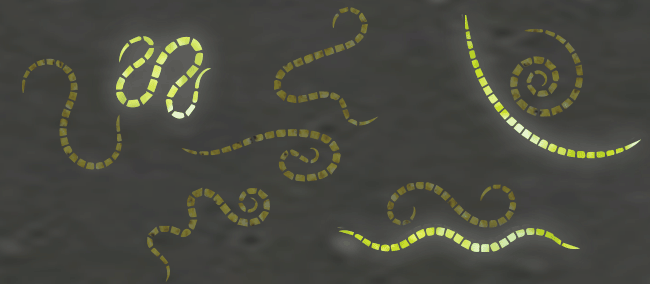
If the study of epigenetics has taught us anything, it’s that we can no longer blame our entire biological inheritance solely on our DNA. Part of that blame can be traced back to the environment that our parents or grandparents were exposed to during their lifetime. Alterations in their epigenetic profile that resulted from these exposures have the potential to be passed on to descendants.
Researchers call this phenomenon epigenetic heredity, and it explains how certain stimuli such as diet, toxins, and even trauma experienced in one generation can affect the physical and mental health of future generations.
Accumulating evidence collected over decades supports the notion of epigenetic heredity. However, the process by which it occurs is not entirely known. Researchers haven’t had an easy way to analyze it, especially concerning persistent epigenetic changes that affect an entire lineage.
Scientists at the University of Maryland (UMD) decided to tackle this mystery and have come up with a way to study inherited epigenetic modifications using a simple approach. In their research published in Nature Communications, they used selective mating as a tactic to create permanent epigenetic changes that were maintained in over 300 generations of nematode worms.
Epigenetics mutations, unlike genetic ones, do not alter the genome sequence and are potentially reversible. When an organism reproduces, these types of modifications can be inherited or repaired and will often dissipate in subsequent offspring. Finding stable epigenetic changes that last for hundreds of generations is rare. But they have been observed in various systems and are usually maintained by mechanisms, such as DNA methylation, that involve positive feedback for duplicating or amplifying the mutation.
In several articles, we have discussed how DNA methylation and histone modifications can be transmitted from parent to child. We have also reviewed the role epigenetics plays in domestication, which is a type of evolutionary change that takes place when acquired epigenetic marks are inherited over several generations.
The study originated when the research team first discovered that the nematode worms they were breeding kept passing on the same epigenetic mutation to each additional generation – no matter how many times they bred them. The species they were using, C. elegans, is a biological model organism often used in research. They can be dioecious, with separate male and female individuals, and are easily manipulated for reproductive experiments.
Here, the researchers noticed that the worms bred to carry a gene for producing fluorescent proteins glowed occasionally yet had virtually the same DNA. This anomaly led them to conduct more experiments to understand better what was going on. While only one parent needs to carry the gene for the offspring to glow, the offspring always glowed when the mother had it, yet when the gene came from the father, it rarely glowed or didn’t at all.
“We found that there are these RNA-based signals controlling gene expression,” said Antony Jose, senior author of the study and associate professor of cell biology and molecular genetics at UMD. “Some of these signals silence the gene and some of them are protective signals that prevent silencing. These signals are duking it out as the offspring develop. When the gene comes from the mother, the protective signal always wins, but when the gene comes from the father, the silencing signal almost always wins.”
Once the silencing is initiated via the male inheritance, it remains that way forever or at least considering it tested that way in 300 generations. Epigenetic changes are complex, and it is rare to find ones that can last for more than a few lifecycles, making it difficult to study. Thus, using a tool like mating-induced RNA silencing opens the door for exploring the details of epigenetic inheritance like never before.
Still, not all genes can be studied this way, as most will usually recover from silencing and become expressed in future generations. At the same time, it has now become clear that some genes are vulnerable to permanent epigenetic changes.
The main takeaways from this study are that mating can be used to easily induce long-lasting epigenetic modifications, and the occurrence of this phenomenon happens at the single-gene level.
As Jose put it, “Now we can manipulate this gene and control everything about it, which will allow us to determine what characteristics make a gene susceptible or resistant to heritable epigenetic change.”
While more research is needed to identify other genes vulnerable to long-lasting epigenetic changes, the team is hopeful that future scientists will have a clearer understanding of epigenetic heredity and the biological processes involved, not just in animal models but in humans as well.
Source: S. Devanapally et al. (2021). Mating can initiate stable RNA silencing that overcomes epigenetic recovery. Nature Communications.
Reference: Match matters: The right combination of parents can turn a gene off indefinitely University of Maryland, College of Computer, Mathematical, and Natural Sciences. July 9, 2021.

